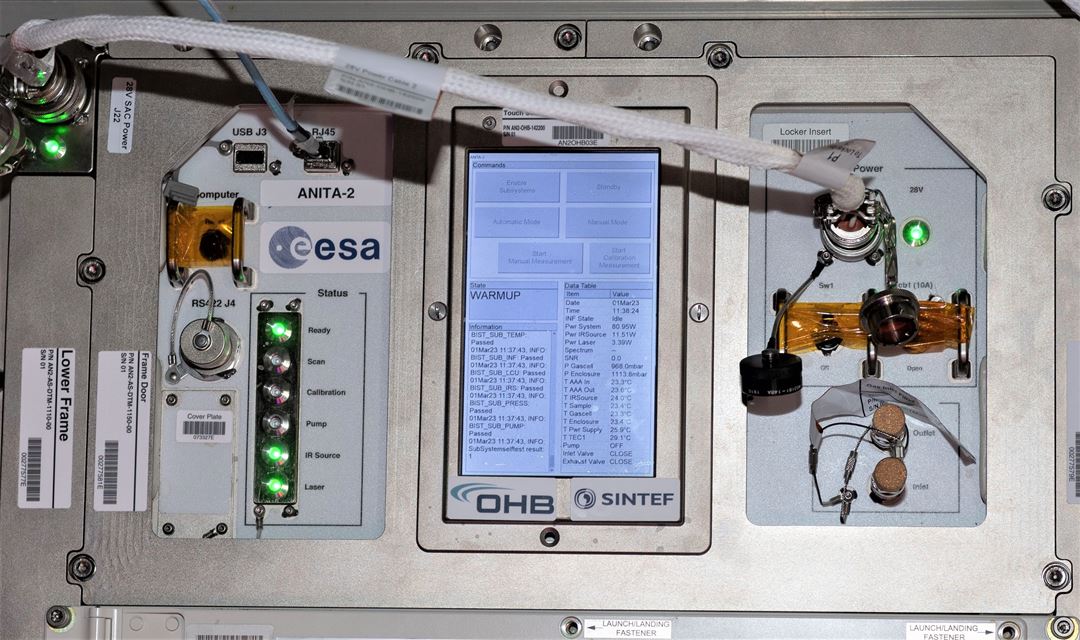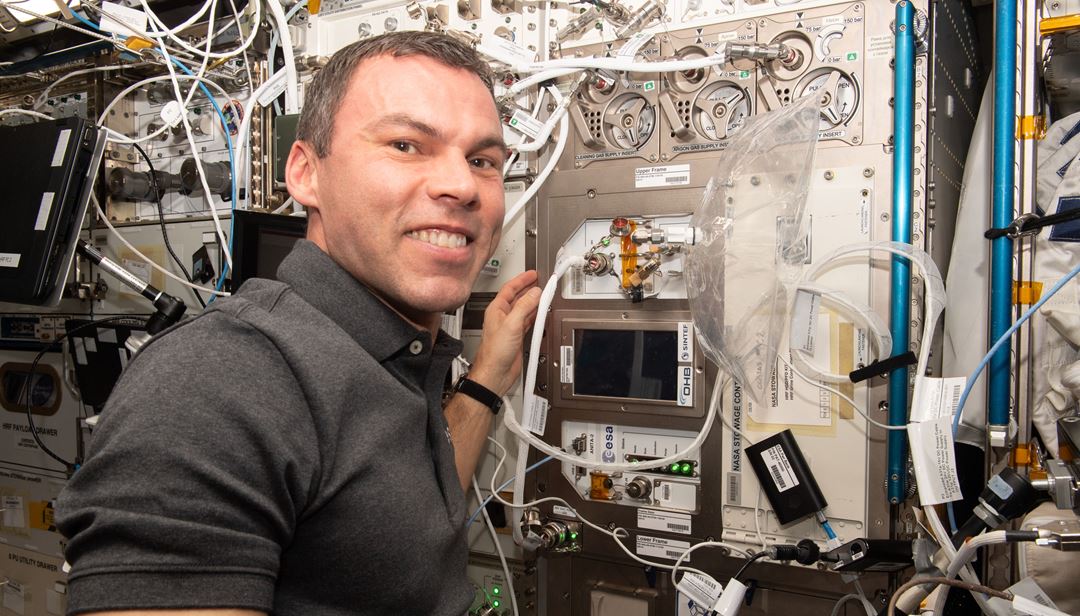ANITA (Analysing Interferometer for Ambient Air) is a multicomponent air analyser, capable of measuring more than 40 trace gases simultaneously. Therefore, it is well suited for monitoring the atmosphere of confined environments like a spacecraft. The measurements apply FTIR (Fourier Transform Infra-Red) technology and novel calibration and analysis software specially developed by SINTEF to handle the complex and overlapping signals, many of which are found close to the noise floor of the instrument.
This is a journey that has lasted for more than 30 years, and we frequently publish both technical and popular science articles to keep the public updated on the advances made.
We have gathered some examples here to give an overview (in Norwegian and English)
Popular Science
- Norwegian Sensor technology sets its sights on Mars - 2024, Gemini, (Norwegian)
- Norwegian technology becomes essential on the International Space Station– 2021, Teknisk Ukeblad (Norwegian)
- Norwegian technology is launched to the International Space Station
- Vital, Norwegian sensors are on the way to the International Space Station, 2021
- The astronauts’ extra nose – 2017 Gemini (Norwegian)

Academic
The following articles describe the pivotal moments where ANITA technology was selected based on a competitive blind test on ground, defined and controlled by NASA (2001), and where ANITA proved to be superior for multi-gas monitoring on the ISS when compared to other measurement techniques (2009).
Atle Honne, Ib-Rune Johansen, Timo Stuffler, Gijsbert Tan, Blind Test Performance of the ESA FTIR-Based Multi-Component Monitoring System for Spacecraft Air Analysis. 30th International Conference on Environmental Systems, Orlando, Florida, July 9-12, 2001. Paper no. 2001-01-2157.
Honne, H. Schumann-Olsen, K. Kaspersen, T. Limero, A. Macatangay, H. Mosebach, D. Kampf, P. D. Mudgett, J. T. James, G. Tan, W. Supper: ANITA Air Monitoring on the International Space Station: Results compared to other measurements, ICES 2009, Savannah, Georgia, USA. Paper no. 2009-01-2520
You can also get articles giving yearly updates at the Texas Tech University Library, which has archived the proceedings from the International Conference on Environmental Systems since 2014. The following articles are recommended for understanding the status of ANITA2, which currently is monitoring 48 gases in the ISS air:
Honne, A, Kaspersen, K. A. Bakke, A. E. Liverud, J. Thielemann, B. Elvesæter, M. Gisi, L. Pfeiffer, A. Stettner, E. Göhler, R. Seurig and R. Rebeyre, "ANITA2 – the Multicomponent Air Analyser on ISS – Gas Measurement Results From the ISS Air in 2023”, in ICES, Louisville, Kentucky, USA, 2024. Paper no. ICES-2024-178.
Honne, K. Kaspersen, K. A. Bakke, A. E. Liverud, J. Thielemann, B. Elvesæter, M. Gisi, L. Pfeiffer, A. Stettner, E. Göhler, R. Seurig and R. Rebeyre, "ANITA2 – the Advanced Multicomponent Air Analyser for ISS – Gas Measurement Results From the ISS Air in 2022", in ICES, Calgary, Canada, 2023. Paper no. ICES-2023-95
Honne, K. Kaspersen, K. A. Bakke, A. E. Liverud, J. Thielemann, B. Elvesæter, M. Gisi, L. Pfeiffer, A. Stettner, R. Seurig, T. Stuffler, J. Witt, R. Rebeyre and S. Hovland, "ANITA2 – the advanced multicomponent air analyser for ISS – Pre-flight calibration and testing of gas measurement performance," in ICES, Minnesota, 2022. Paper no. ICES-2022-168

